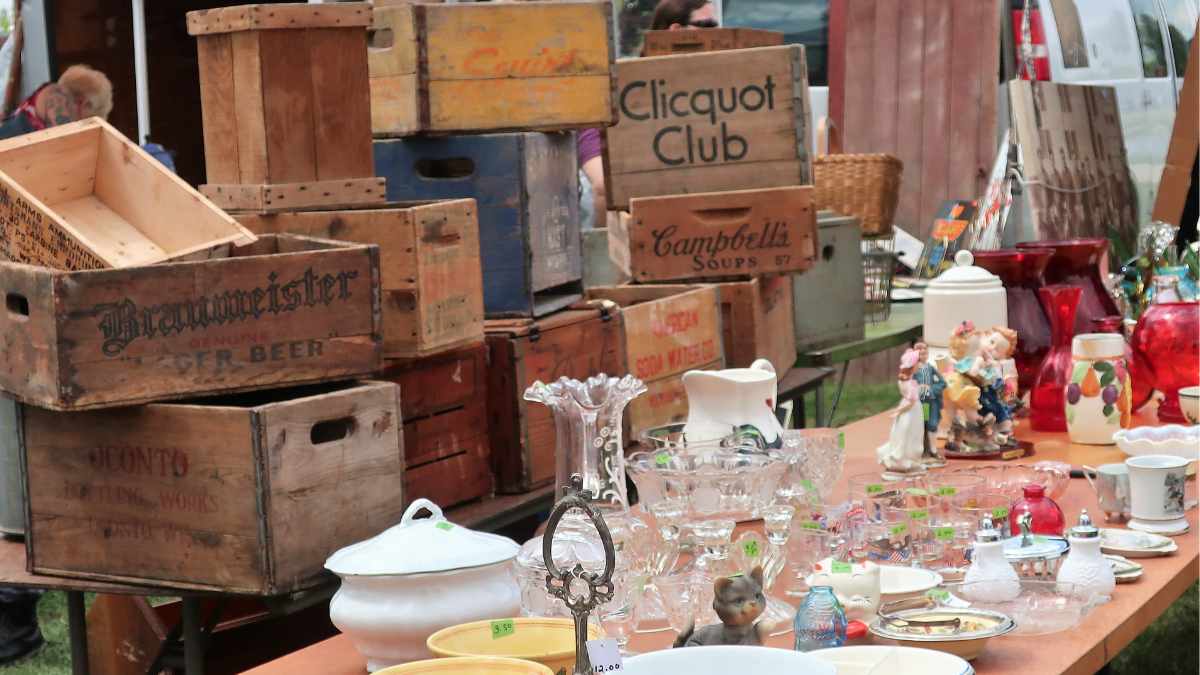I love the idea of flea markets. They’re like treasure chests scattered across towns and cities, each stall and table brimming with items that carry their own stories. This hunt for the unique and the sentimental is more than just recreational—it’s a thriving culture that spans the globe. This guide offers flea market shopping tips and tricks.
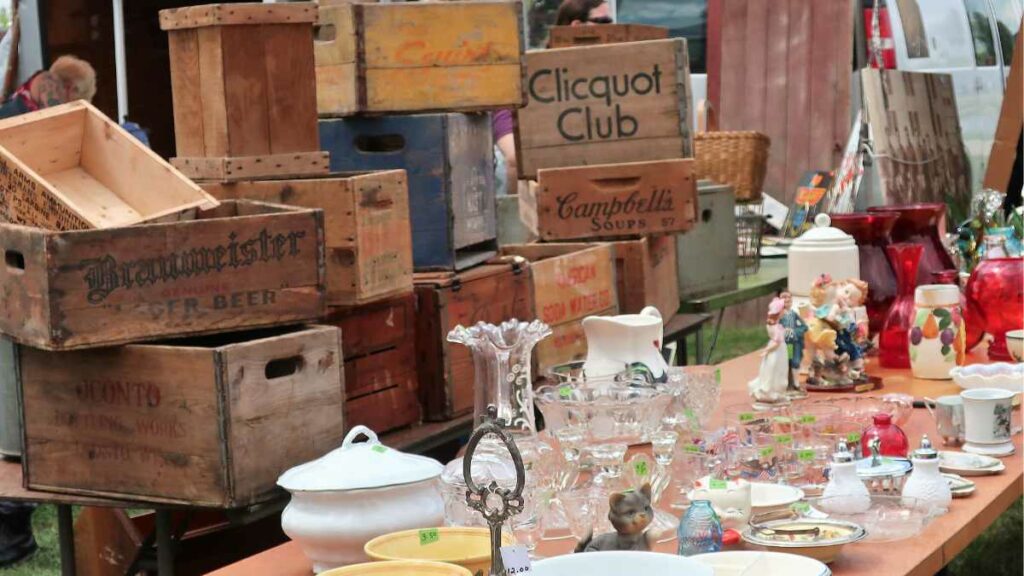
You might wonder why flea markets have surged in popularity. Part of the allure lies in their eclectic mix. There is something undeniably attractive about searching through a diverse array of goods, where each visit promises discoveries.
It’s the sustainability aspect that resonates with many shoppers today, too. Choosing thrift items over new ones can significantly reduce waste, adding a layer of consumer consciousness to the thrill of the hunt.
Flea markets offer a charm distinct from the predictability of retail stores. They invite us to enter a world where history and potential find common ground.
I’ve learned that seasoned flea market shoppers approach these experiences with a mix of excitement and preparation. After all, sifting through the past to redecorate your present requires a discerning eye and a well-thought-out strategy.
The economic advantage is evident, as thrift shopping at flea markets often allows for substantial savings compared to buying new.
However, the cultural experience is just as vital. It’s more than transactions; it’s about immersing yourself in a community of like-minded individuals and contributing to the thriving network of sustainable consumerism.

Embracing the philosophy of ‘one person’s trash is another’s treasure,’ flea market shopping harmonizes with efforts to create a better, less wasteful future.
So, if you’re ready to embark on your flea market adventure, I have some insights to share. Ensuring a successful and enjoyable experience begins with preparation, and I will show you exactly how to prepare for your next flea market visit.
Before You Go: Pre-Flea Market Checklist
Preparation is critical to mastering the flea market experience. Before stepping out of your door, I recommend following a simple yet crucial checklist to ensure your trip is enjoyable and productive.
Start with a shopping plan. A plan isn’t just about the items you’re looking to find; it’s about setting personal goals for the trip.
Ask yourself what you need and what would be friendly and nice to have. Take note of any particular sizes, styles, or colors. This streamlines your search once you’re there and helps keep your focus.
Budgeting is another essential aspect of preparation. Define a clear budget for yourself to prevent any post-shopping regrets. Stick to this budget.
Remember, a great deal isn’t great if it means eating into next month’s rent. When setting your budget, remember that cash is king at flea markets—many vendors don’t take cards, and being able to pay in cash might even help in negotiations.
Your flea market toolkit should include these must-haves: a tape measure for sizing items right there and then a notebook to jot down where items of interest are located, bags or a cart for carrying items, and perhaps most importantly, a comfortable pair of shoes. Trust me, your feet will thank you after a day of walking.
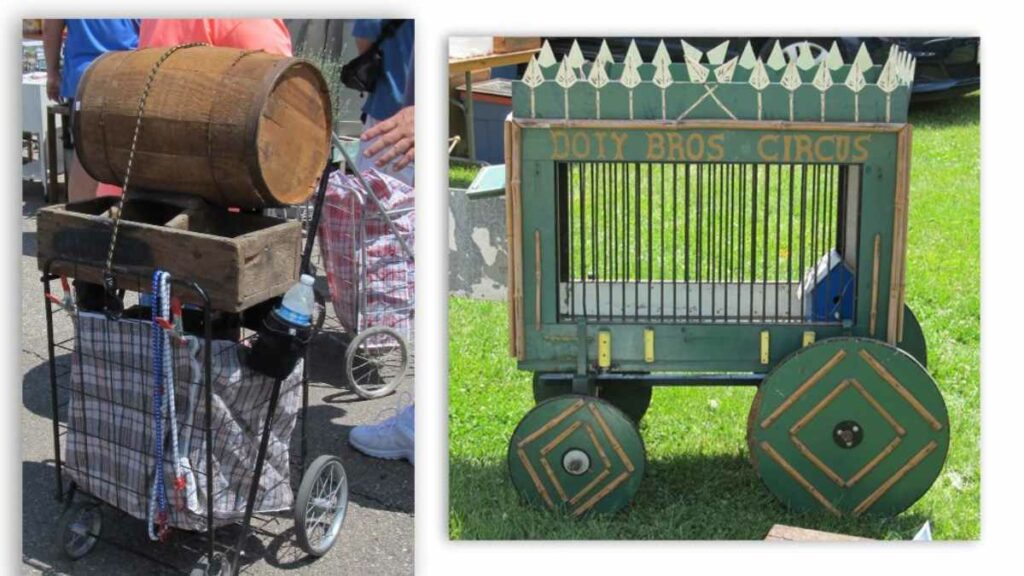
Last but certainly not least, arm yourself with patience. Good finds don’t come to those who rush but to those who look carefully. Now that your pre-market checklist is complete, you’re almost ready to hunt for treasures. Just remember that timing your visit can significantly affect what you find.
Timing is Everything: When to Shop for the Best Deals
Many people think flea markets are a free-for-all, but that’s not the case at all. Timing can be a critical component in the flea market experience.
Early birds often get first dibs on high-demand items. If there’s something specific you’re hunting for, or if you want the most comprehensive selection, it pays to arrive as close to opening time as possible.
However, this means you’ll likely be paying close to the asking price since vendors aren’t typically as willing to negotiate deals first thing in the morning.
Conversely, the end of the day might be your best bet if it’s the deals you’re after. As closing time approaches, vendors are more inclined to offer discounts to avoid packing up unsold merchandise. Just remember, the selection will be picked over by this time.
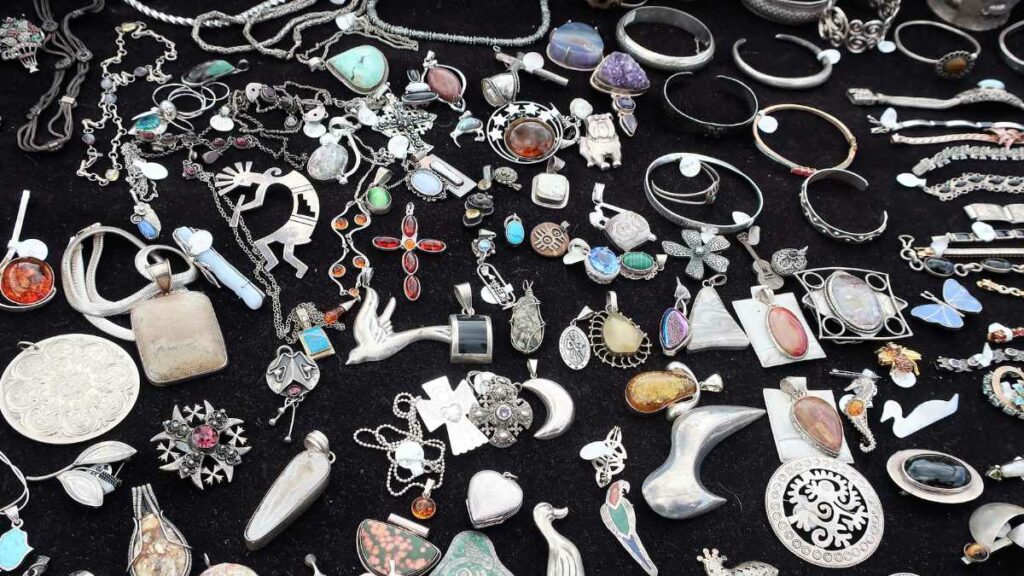
Then, there’s the seasonal element to consider. Flea markets during the peak of summer can be sweltering and crowded, making it challenging to shop comfortably. Spring and fall often offer more pleasant shopping conditions, with the bonus of vendors willing to negotiate as they clear out old inventory for new season stock.
Armed with these timing tactics, you’ll be well-prepared to navigate the stalls efficiently once you arrive, which is crucial for a successful flea market foray.
Picking a good time lays the groundwork, but there’s more to shopping smart. In the next section on navigating the stalls, I’ll reveal strategies that ensure you make the most of your flea market visit, regardless of when you decide to go.
Navigating the Stalls: Strategies for Efficient Shopping
When a sea of stalls surrounds you, each brimming with potential treasures, it’s easy to get overwhelmed. Efficiency is critical if you want to cover more ground without burning out.
I suggest you start by grabbing a market map, if one is available, and take a moment to mark the types of vendors you’re most interested in. This way, you have a visual guide to streamline your route.
As you navigate the aisles, remember that interacting with vendors is part of the experience. Not only can they offer you valuable information about the items they sell, but they could also clue you in on pieces that haven’t been displayed yet.
Keep conversations friendly and express genuine interest; this may lead to better deals or first dibs on new stock.
Finally, while you want to be methodical, remember to stay flexible. The perfect find might be around the corner, so keep your eyes peeled and be ready to stray from your planned path if something catches your eye.
However, resist the urge to buy the first thing that draws your attention. Take a moment to think about how it fits with your needs and if the price is reasonable.
Transitioning from a careful exploration to the next critical step, negotiation is a subtle art. As we move into the haggling dynamics, remember that the skills you’ve honed in navigating the stalls can serve you well.
Understanding the vendors and the value in each booth gives you a foundation of knowledge to engage in successful price negotiations.
Haggling 101: The Art of Negotiating Prices
A trip to the flea market isn’t just a shopping excursion; it’s a chance to sharpen your negotiation skills. When it comes to haggling, the goal isn’t to win or to outwit the vendor. It’s about reaching a fair price that’s a win-win for you and the seller.
Start by doing your homework. If you have your eye on a particular type of item, like antique cameras, research average prices beforehand.
This knowledge is your haggling foundation. A good starting point is to offer a price roughly 10-15% lower than you’re willing to pay, giving yourself some negotiation room.
Use polite inquiry as a tool: ask vendors about the history of an item or its uniqueness. This establishes a rapport without immediately diving into price discussions. Listen attentively; sellers often hint at flexibility in their pricing with phrases like ‘I could do better on the price.’
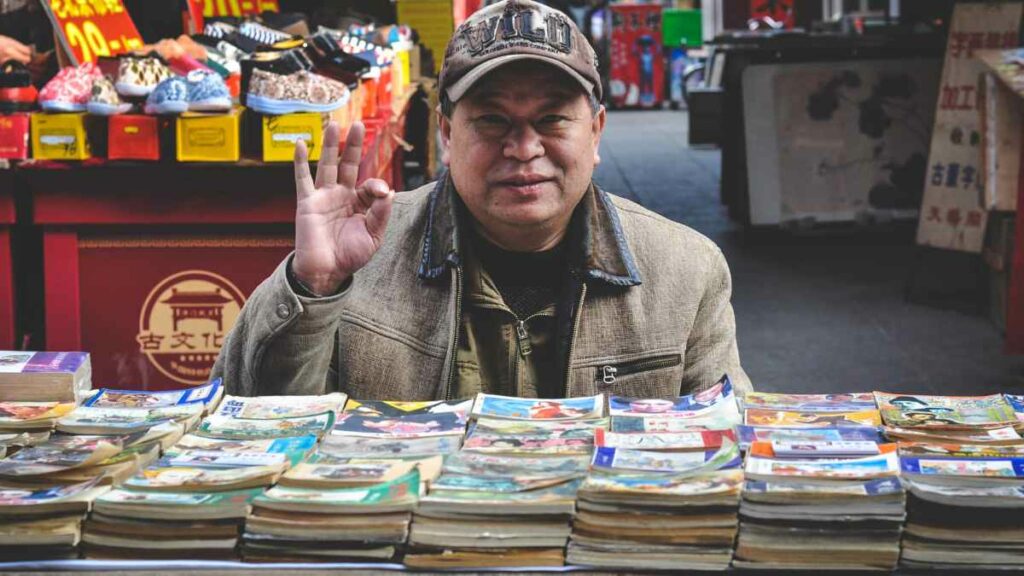
BODY LANGUAGE speaks volumes in negotiations. A relaxed stance and a friendly smile can make sellers more open to discussion. Remember to respect the seller’s expertise and stick to reasonable offers to maintain a positive atmosphere.
Confidence is essential, but patience is a virtue here too. If a vendor isn’t willing to meet your price, walk away politely. Sometimes, if they see you’re not desperate to buy, they might be inclined to call you back with a better offer.
However, recognize when to yield; if an item is rare or precious, be prepared to pay closer to the asking price.
Finally, bring cash—the physical exchange of money is compelling. Vendors will likely be more flexible if they see you’re ready to complete the purchase immediately.
Inspecting Items Like a Pro: Quality vs. Quirky
When I’m among the maze of vendors at a flea market, my eyes naturally gravitate towards items that stand out: a glint of antique brass or the faded print of a vintage poster. These treasures can either be real finds or traps for the unwary. Distinguishing quality from mere quirkiness requires a practiced eye and some know-how.
I make it a point to look for craftsmanship. Items with solid construction or fine details often indicate a piece’s longevity and care in creation. Cracks, rust, and other signs of wear can tell stories, but they also suggest the tending an item will need. I ask myself if the repairs are something I can handle or if they’re worth the investment.
Then there’s the question of utility versus decor. I’m tempted by the unusual, but I also ask myself, ‘Will I use this, or does it serve a functional purpose in my home?’ It might be a handcrafted stool with vibrant paintwork that could double as a plant stand or a collection of old kitchen canisters, practical and fetching in equal measure.
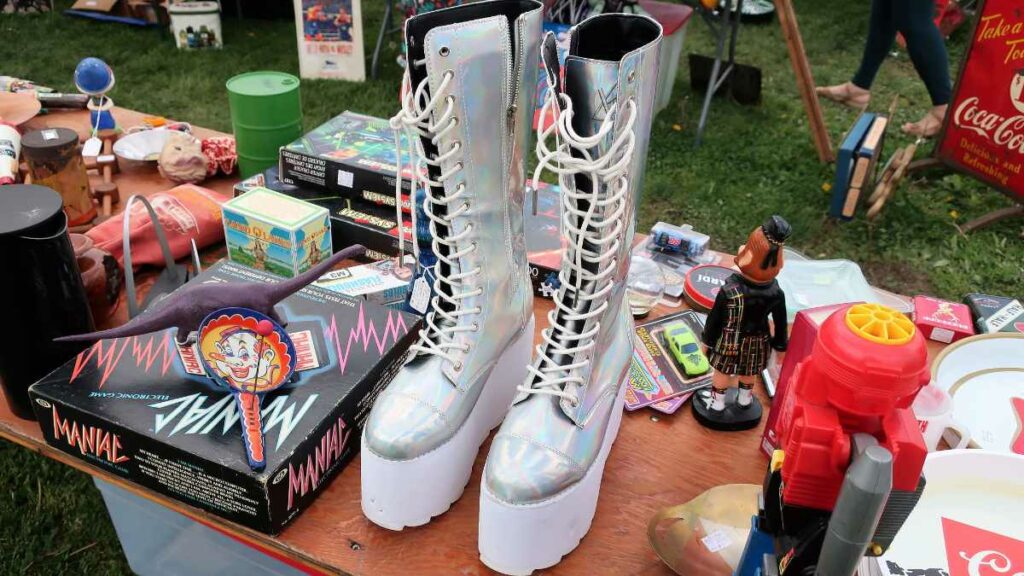
Accuracy in dating is crucial, especially when it comes to vintage finds. I examine the manufacturer’s marks, look for patinas that signify age, or inspect any signatures that could authenticate a piece. If a seller claims an antique item, I am not shy about asking how they know. A little background check beforehand can go a long way.
In a sea of items, hidden gems are waiting to define a living space with character and a story. Yet, the true art lies in the discovery and selection: choosing pieces that resonate personally and fulfill a need or inspire creativity at home.
As I transition from inspecting the treasure trove of quirky objects to the next topic, I carry the consciousness of my impact as a consumer. I’m not just shopping but engaging in a sustainable choice that influences the world around me.
Sustainability and You: Conscious Consumerism
Flea markets are more than just a goldmine for eclectic treasures; they represent a critical node in the sustainable living movement. Shopping at these community hubs isn’t only about finding one-of-a-kind items; it’s an act of environmental stewardship.
Each purchase you make from a flea market redirects goods from landfills and reduces the demand for new product manufacturing. This process lessens your carbon footprint and lends a hand in conserving natural resources. Plus, it’s a form of recycling that oozes charm and character.
Your buying choices can bolster local economies, too. When you spend your dollars at a flea market, you often directly support small-scale sellers and entrepreneurs. This grassroots economic impact can ripple through a community and nurture local job creation.
Embracing upcycling is not just about infusing your life with unique items; it’s also a commitment to innovation. By repurposing flea market finds, you’re challenging yourself to rethink their function and value. A vintage mirror can become a quirky picture frame, or an old door might transform into a headboard – the possibilities stretch as far as your creativity.

With every transaction, you’re also forming the very fabric of your local culture. Flea markets capture the essence of a place through the goods they offer, and your participation helps to preserve cultural heritage and diversity.
Encouraged by the principles of conscious consumerism, you’ll recognize that the impact of your shopping habits can extend far beyond your personal space.
Beyond Bargains: Cultivating Community Connections
Let’s spotlight a somewhat overlooked aspect of flea markets: the human connections they foster. When you wander through the maze of stalls and interact with vendors, you’re doing more than just shopping; engaging with the local community and sinking your roots into the area’s culture.
Building relationships with vendors is a hidden gem of the flea market experience. These individuals are often passionate about their items and have many stories behind each piece.
Take a moment to chat; you might learn the fascinating history behind that antique clock or handcrafted necklace. These tales enrich your shopping experience and give you unique insights to share when you showcase your new treasures at home.
Another remarkable aspect of flea markets is the chance to meet like-minded shoppers. Whether you’re exchanging tips on where to find the best vintage clothing or sharing a laugh over a peculiar knick-knack, these shared moments create a sense of belonging and community.
While navigating through aisles of curiosities, you also contribute to the local scene. Flea markets are vibrant places where artists, collectors, and hobbyists converge to display their passions. By showing interest and making purchases, you support these micro-entrepreneurs, many of whom depend on these markets as their primary source of income.
As you become a regular at these markets, your continued support helps sustain these communal hubs and ensures they remain a thriving part of the neighborhood for years.
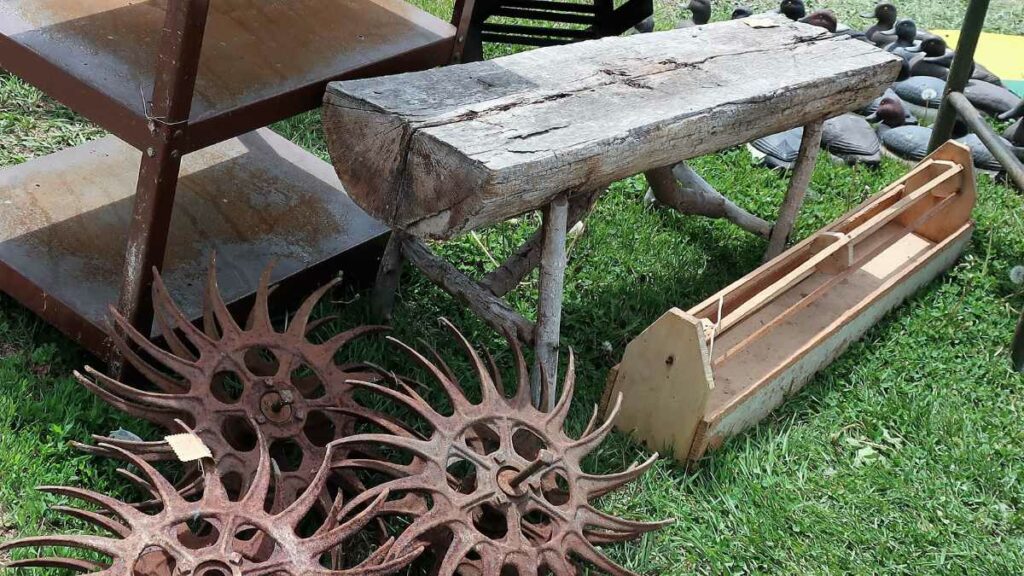
Wrapping Up: Smart Shopping for Flea Market Success
I hope this guide has given you valuable insights to enhance your flea market shopping experiences. Remember, while flea markets are a treasure trove of eclectic items, the true gems are often tucked away, requiring a keen eye and intelligent strategies to uncover.
Be sure to AVOID common pitfalls such as not researching items, succumbing to impulse purchases, or undervaluing the small yet significant finds. These mistakes can easily be sidestepped with a bit of preparation and self-restraint.
Flea market shopping is about more than just transactions; it’s a journey into the past, an opportunity to create a sustainable future, and a chance to forge lasting community ties. Patience, respect, and curiosity are your best allies, aiding you to make informed decisions that you’ll be proud of long after you leave the market.
Stick to your planned plan, enjoy the process, and take pride in your conscious consumerism. Embrace the adventure with an open heart, and who knows? You may leave with more than a purchase – a story, a smile, or a new friend.
Whether you’re a seasoned bargain hunter or a fledgling flea market visitor, may each visit inspire and delight you and bring a unique sparkle to your life. Keep this guide close; you’ll have a fulfilling and fun flea market experience. Happy hunting!

